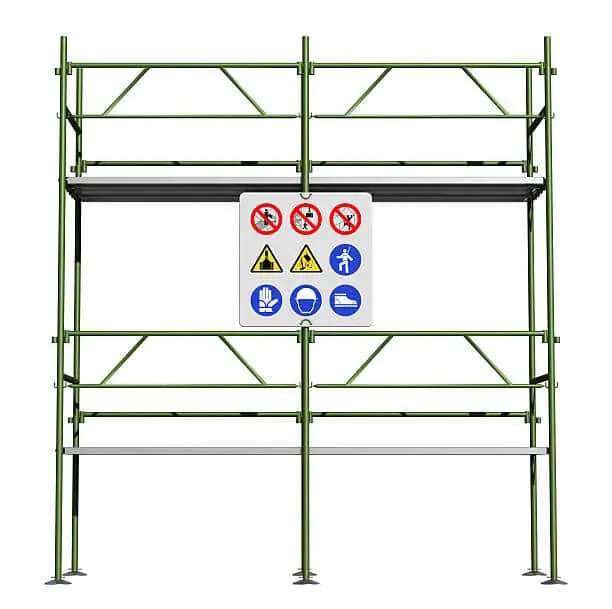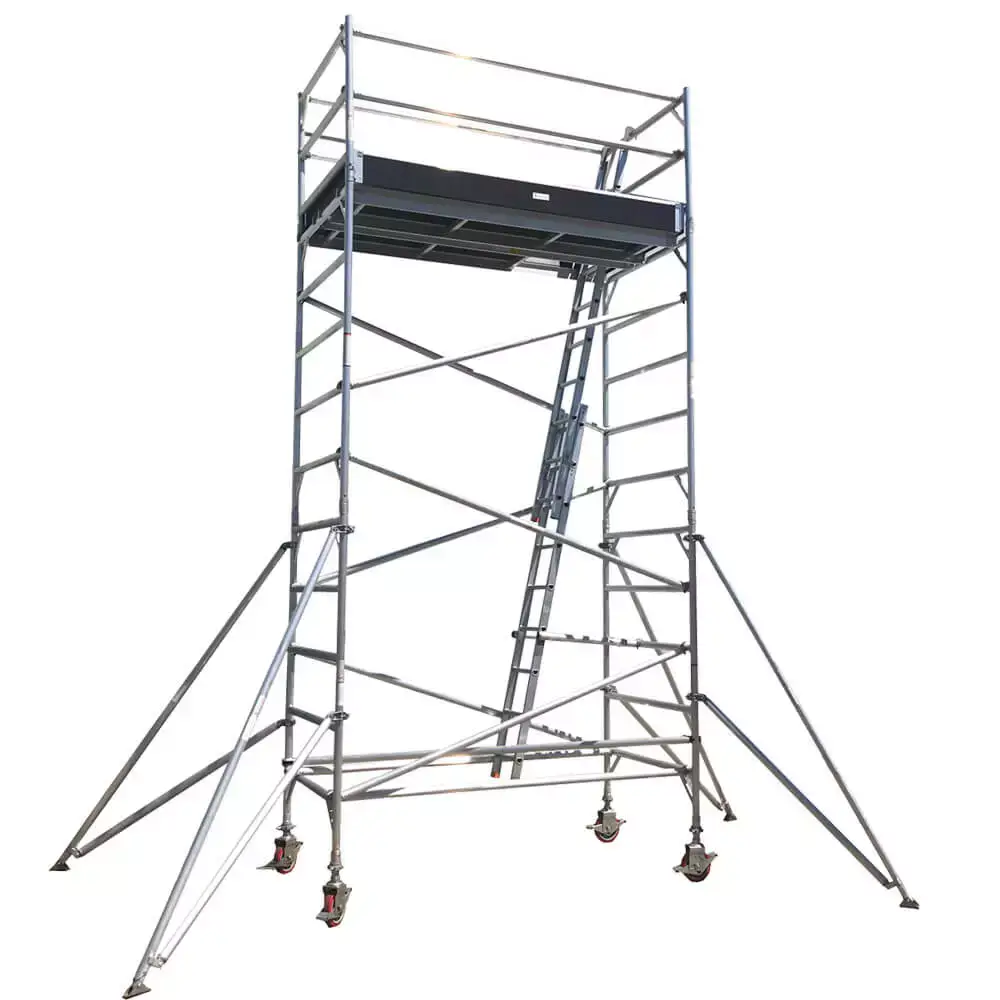mobile scaffolding
What is a Mobile Scaffold
Table of Contents
A mobile scaffold is a portable tower that uses castor wheels as supports and frequently uses aluminium materials. Tower scaffolds comprise four Standards (or two frames) that connect vertically and horizontally with Ledgers, Transoms and Braces.
Mobile towers create elevated platforms that are excellent for plastering and painting, two tasks requiring plenty of movement. The mobile tower design is safe to assemble without a licence in certain conditions and can move while standing at full height.
While a licence may not be required, our team recommend enlisting a competent person to erect a tower and follow scaffold tagging requirements.
What’s The Difference Between Mobile Scaffold and Tower Scaffold?
Some differences inform you whether you should use a mobile or tower scaffold:
Cost
The most obvious factor is the upfront cost of similar packages. Mobile scaffolds use lightweight aluminium and are built for residential sites and non-builders. They remain more cost-effective on smaller projects as a result.
Tower scaffolds are suited to large-scale construction, require more components, and are pricier. Many trades hire instead to reduce costs and split payments into instalments across weeks or months.
Height
The access height on-site can determine the type of scaffold to use. Mobile Scaffolds are ideal for movement on residential sites but have a maximum reach of 12 metres.
Tower scaffolds are capable of exceeding 12 metres comfortably. Their modular design can create scaffold systems as wide as they want, with some capable of extending 30 storeys high.
Height influences who can install a scaffold. Larger systems increase the risk and need multiple personnel to ensure a WorkSafe-compliant system. Any tower with a fall height greater than four metres requires a qualified scaffolder and a safe work method statement (SWMS). Anything between two and four metres still needs a SWMS but not a qualified scaffolder.
Mobility
For tasks involving constant movement, mobile scaffolds win. The lockable wheels and lightweight aluminium allow a person to quickly push aluminium platforms between rooms or around a structure, which is impossible with tower scaffolds.
Frequently Asked Questions
Below we have compiled a list of questions many users ask about mobile scafoflding.
Mobile Scaffolds Must Not be Used on What Surface?
The maximum slope a mobile aluminium scaffold can securely stand on is seven degrees. Anything greater increases the risk of a collapse or the tower itself overturning.
Furthermore, netting and sheets should not be used on any mobile scaffold for the risk of acting as a sail and overturning the structure.
How Many Horizontal Guardrails Are Needed on a Mobile Scaffold?
On any Mobile Scaffold package, two horizontal braces must be on each side of the platform to act as guardrails and mid-rails.
Two horizontal braces are often used at the bottom of larger towers as additional supports.
How High Can a Mobile Scaffold Reach?
The maximum height for any mobile scaffold is between 10 and 12 metres tall. Anything greater is not certified under Australian Standard 1576. The ladder frames on each side allow the height of platform to adjust by 400mm.
If you have further questions on how to install a mobile scaffold, or want to enquire for purchase, call 1300 622 686.




